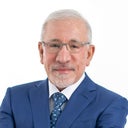It appears that i have formed a Saddle Nose deformity after a surgery to repair deviated septum following a trauma accident. I don't really care as much about the red scarring as I do the structural damage. What exactly will it take as far as surgery to correct this issue? Costs and whether insurance will cover any are my primary concern. Thanks a lot.
Answers (10)
From board-certified doctors and trusted medical professionals
Dr. Bahman Guyuron, MD

Dr. Bahman Guyuron, MD
Board Certified Plastic Surgeon
Answer
Dr. Ronald Schuster, MD

Dr. Ronald Schuster, MD
Board Certified Plastic Surgeon
Answer
Dr. Steven M. Denenberg, MD

Dr. Steven M. Denenberg, MD
Board Certified Facial Plastic Surgeon
Answer
Dr. Zoran Potparic, MD

Dr. Zoran Potparic, MD
Board Certified Plastic Surgeon
Answer
Dr. Jonathan Kulbersh, MD

Dr. Jonathan Kulbersh, MD
Board Certified Facial Plastic Surgeon
Answer
Dr. Eric M. Joseph, MD

Dr. Eric M. Joseph, MD
Board Certified Facial Plastic Surgeon
Answer
Dr. Richard Mark Winters, MD
Dr. Richard Mark Winters, MD
Board Certified Plastic Surgeon
Answer
Dr. William Portuese, MD
Dr. William Portuese, MD
Board Certified Facial Plastic Surgeon
Answer
Answered on Nov 16, 2019
Answer
More Rhinoplasty Questions
See all Rhinoplasty Q&AWE SEND PRETTY
EMAILS
What’s trending? Who’s turning heads? Which TikTok myths need busting? We’ve got you. No fluff, no gatekeeping—just real talk. Get our free, unfiltered newsletter.